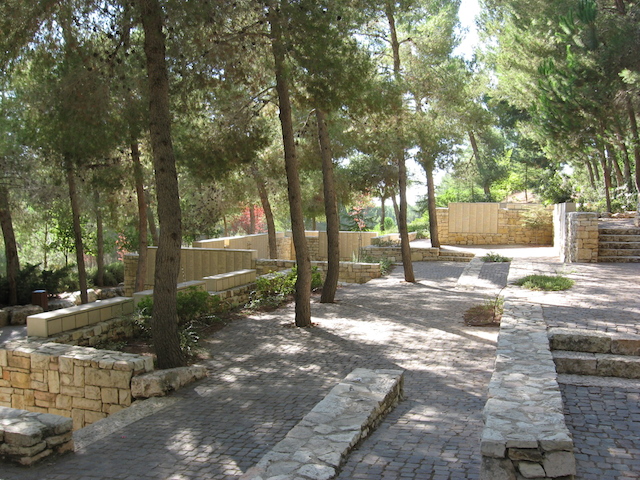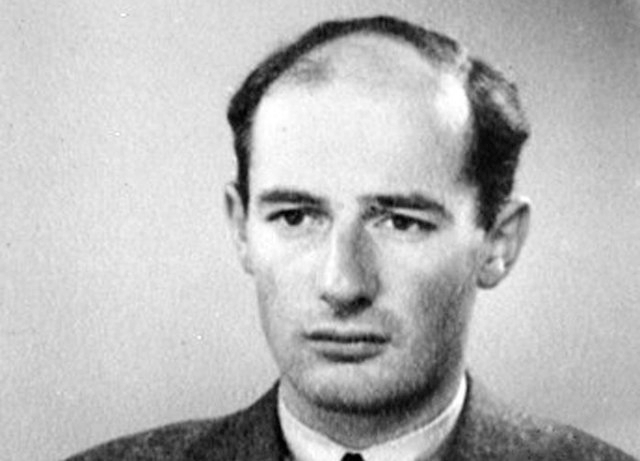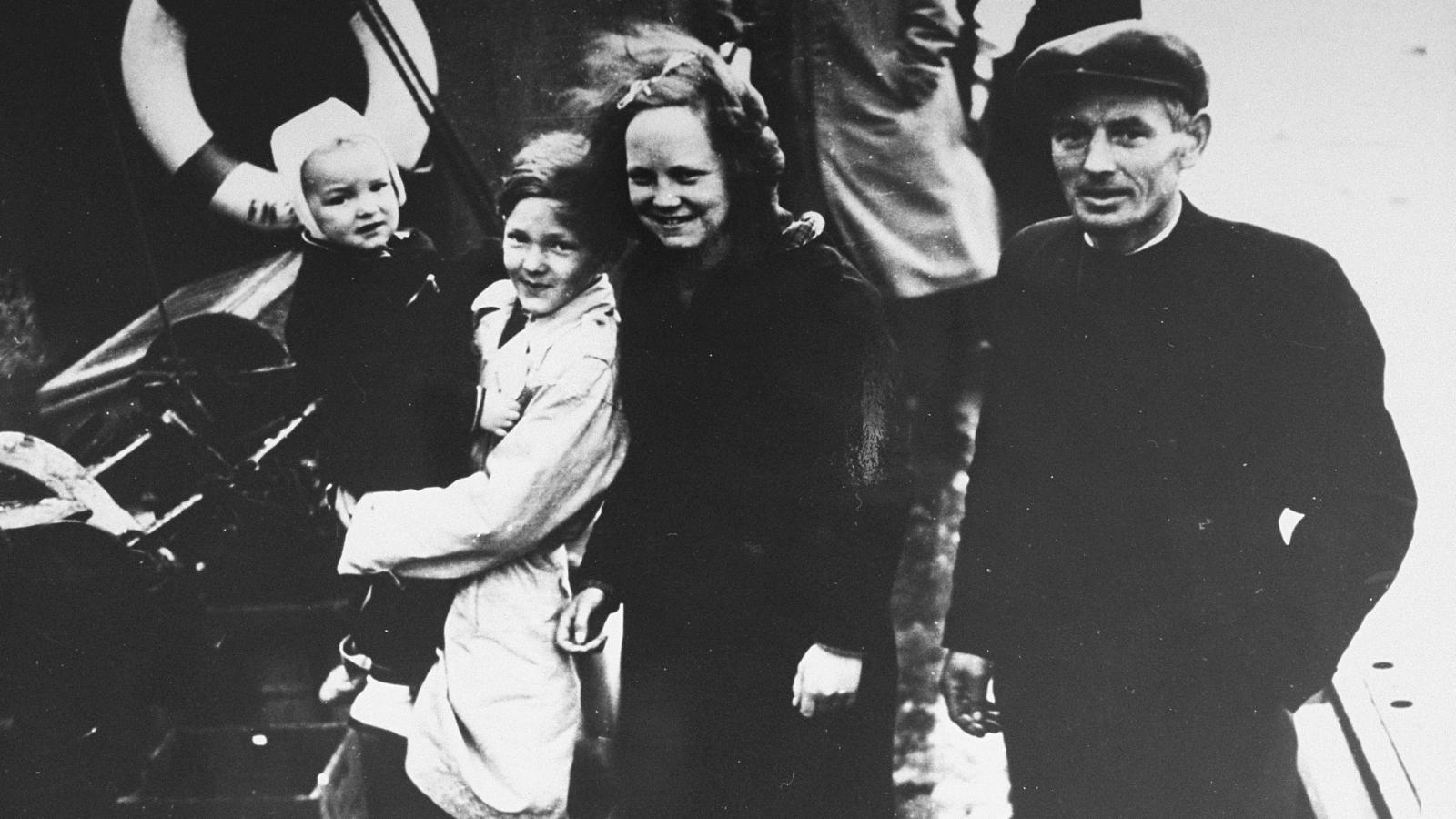Many ordinary men and women in every country of occupied Europe showed great courage and compassion in helping the Jewish victims of Nazi terror.
For the most part, these individuals did not plan to become heroes; the names of the rescuers are largely unrecorded, and their good deeds remain anonymous and unrewarded, except in the emotions of those they saved. They helped by providing hiding places, false papers, food, clothing, money, contact with the outside world, underground escape routes and sometimes even weapons.
Their decency exposed them to the dangers of discovery and denunciation. If caught, they faced torture, deportation to concentration camps, or execution. Their behavior was atypical even in their own communities, where the attitude of the majority was characterized by inertia, indifference, and open complicity in the persecution and mass murder of Europe’s Jews.


Help us keep Jewish knowledge accessible to millions of people around the world.
Your donation to My Jewish Learning fuels endless journeys of Jewish discovery. With your help, My Jewish Learning can continue to provide nonstop opportunities for learning, connection and growth.
Why They Did It
It is impossible to analyze the multiple reasons for individual heroism and ethical behavior under Nazi occupation. Explanations for heroism and creativity rest in the individual psyche and character; however, it is clear that compassion and simple decency played as large a role as bravery.
Impartial and reliable information about the number of rescuers and the number of Jews aided or saved is not available. Very rough statistics indicate that about 2,000 non-Jews participated in the rescue of Jews and that they saved between 20,000 and 60,000 children and adults.
There is no postwar institution specializing in either World War II or the Holocaust that has collected systematic data about the righteous or about Christian-Jewish relations during the war years. Postwar historiography has given scant attention to this subject, except for biographies of heroes like Raoul Wallenberg in Budapest. Individual episodes are recorded in numerous published memoirs or hidden within the histories of the Jewish communities under German occupation. Others are found in some survivor testimonies, oral histories, and depositions.
Individuals & Groups

The rescuers can be broadly divided into two categories: 1) individuals acting autonomously in haphazard isolation, and 2) individuals acting as part of organized groups–for example, Christian clergy, Socialists, and Communists, among others. Both groups of rescuers faced certain common problems.
They were dependent on the general political and military situation. Helping Jews was thus more successful as liberation approached than in the early days of the war. Later in the war, the time required in hiding was shorter, support from local resistance movements was better organized, and the degree of popular hostility to rescue was muted by imminent military defeat.
The geographical patterns of local hostility to Jews influenced receptivity to their rescue. Thus, western Europe (France, Belgium, and the Netherlands), Scandinavia (Denmark and Finland), and southern Europe (Italy and Greece) adapted rapidly to the problems of hiding and rescuing Jews, whereas eastern and central Europe (Poland, the Ukraine, and Austria) remained a more hostile environment to rescue efforts.
As the war continued, the rescuers learned to adapt and work around the Nazi network of informers and collaborators. However, they were never able to develop effective strategies to combat the Nazis’ rapid organization of mass deportations and population transfers. As the war progressed, rescuers were able to identify sympathetic local groups, individuals, and organizations in every country of occupied Europe; for example, low-level clergymen, Socialists, Communists, and nationalist anti-Nazis. At all times, however, the success of Jewish rescue depended upon fate and chance.
Individuals faced greater pressures than did groups. Many Christian professionals (writers, artists, doctors) saved their Jewish colleagues; Christian employees aided Jewish employers; Jewish employees were helped by Christian bosses; and Gentile wives helped save their Jewish husbands and children.
Despite the overwhelming odds, individual rescues sometimes succeeded, especially if the Jewish fugitives could pass as natives in language, manner, and appearance; if the hideout was skillfully camouflouged; if the local population was sympathetic; if geography and distance from neighboring homes aided concealment; and if organized groups or sympathetic friends provided additional safe houses and forged ration papers for essentials like food and clothing.
Notwithstanding the mortal risks, many individuals became “their brothers’ keepers,” were able to overcome their realistic fears, and forged an ethical and practical identification with the persecuted.
Religious Responses
Despite the Vatican failure to act, many priests, nuns, and laymen hid Jews in monasteries, convents, schools, and hospitals and protected them with false baptismal certificates. However, as Saul Friedlander’s memoirs show, many Catholic priests proselytized and converted their “guests.” Moreover, after the war, many Jewish children were never returned to Jewish families, even after lengthy court battles.
Nevertheless, some clergymen went to great lengths to protect the Jewish education and observance of their wards. Catholic, Protestant, Quaker, and Unitarian relief organizations cooperated with the Catholic church in France to rescue 12,000 Jewish children; they arranged safehouses and smuggled small numbers into Switzerland and Spain.
In Lvov, the Metropolitan Andreas Sheptitsky defended the Jews against the Nazis, and he and his Ukrainian compatriots hid about 150 Jews in monasteries in eastern Galicia. Furthermore, the French Huguenot Pastor Andre Trocme converted the small French Protestant village of Le Chambon into a mountain hideout for 1,000 Jewish persecutees. Le Chambon was as unique as the mass rescue of Danish Jews, because the entire town supported the rescue and accepted arrest and torture rather than betray the Jews they hid.
Lay Catholics, such as the German Dr. Gertrude Luckner, who headed the Caritas Catholica, also extended help to Jews and non-Aryan Christians in Germany. She was deported to Ravensbruck for her aid to the persecuted. After the war, Dr. Luckner was honored for her courage by the Israeli government. It must be noted that much of this Christian help was actually rendered to fellow Christians (converted Jews), who were classified as Jews due to their descent under Nazi racial laws.
In addition to active help, many clergymen also protested the mistreatment and deportations of Jews as violations of divine and human laws. The Catholic pastor of St. Hedwig’s Cathedral in Berlin, Bernard Lichtenburg, prayed publicly for the Jews until his arrest and death on the way to Dachau. The rescue work of priests of all Christian denominations is well-documented in postwar literature.
Mass Rescues

Spectacular rescues by mass resistance also occurred, as for example, the rescue of 7,000 Danish Jews in October 1943. The combination of a mass resistance, the proximity of receptive neutral Sweden, advance warnings of Nazi deportations, and identification with the persecutees by a whole nation made this episode almost unique.
Similar smaller rescue operations occurred in Greece, where Jews were hidden in the mountains or on islands. Later, Greek Jews were smuggled into Turkey. Similar popular aid to the Jews was rendered in Finland and in Holland there was a protest strike in February 1941, against the deportation of Dutch Jews. The Italian army also helped Jews in their occupation zones in France and Yugoslavia, and they played an important role in rescuing Italian Jews before the Germans occupied Italy in September 1943.
Resistance movements also helped Jews. Sometimes, this aid was intended to help the Jews; often it was rendered in the context of the general anti-Nazi resistance. In Yugoslavia, Serbian partisans attacked a concentration camp near Nish in 1941, freeing a small number of Jews. On April 19, 1943, the Committee for Jewish Defense, aided by Christian railroad workers, attacked a Belgian transport leaving Malines for Auschwitz. Several hundred Jewish deportees escaped with the help of the Belgian resistance.
A unique example of anti-Nazi resistance occurred in the Bialystok ghetto, where several anti-Nazi German and Austrian soldiers were sentenced to death for smuggling weapons and wireless sets to the Jewish resistance. One of these men, Otto Busse, survived and settled in the Kibbutz Nes Amin in 1969, devoting his life to Israel as a concrete example of “Christian atonement.”

In Hiding
Many Jews were saved by hiding and also by illegal frontier crossings. Anne Frank‘s family hid in the concealed annex of an Amsterdam office building with the help of a Christian friend, and the family of Emmanuel Ringelblum (the Warsaw ghetto historian) hid in Warsaw in a specially prepared underground bunker camouflaged by a Polish gardener’s greenhouse. Both the Franks and the Ringelblums were caught and perished. About 20,000 Polish Jews, however, did survive hidden in Aryan Warsaw. Likewise, 5,000 Dutch Jews and several thousand German Jews were hidden in the heart of the Nazi empire, in Berlin and Hamburg.
Gentiles, like the teacher Joop Westerweel, smuggled about 100 Jewish children (Palestine Pioneers) across the Dutch border through the French Pyrenees to safety in Spain. He worked alongside Yehoyahim Simon (“Shushu”) in the Zionist Halutzim (pioneer) movement. Both Shushu and Westerweel were eventually caught by the Germans and executed.
Spontaneous gestures by supportive Christian neighbors and friends led to aid for Jews in hiding and on the run. Although the Jewish underground railway to Palestine continued with difficulty throughout World War II, some Jews did escape the European arena and made it to safety in Palestine, Turkey, Sweden, Switzerland, and Spain.
Although Yad Vashem (Israel’s Memorial to the Six Million) has honored over 1,200 Righteous Among the Nations since 1953, it is impossible to generalize about the motives, deeds, and actual numbers of these rescuers. Some rescuers acted within the planned context of guerrilla units and resistance movements, others used the buildings and funds of the Roman Catholic church to aid Jews.
The rescuers were able to use the national humiliation caused by the German occupation to build limited popular support and help the Jews. They were few in number but ethically and morally strong. Although the number of Jews they saved was small, they provide a beacon of victory for posterity, a victory over the capitulation and collaboration of the majority of their compatriots.
Reprinted with permission from Genocide: Critical Issues of the Holocaust (Rossel Books & Behrman House).



